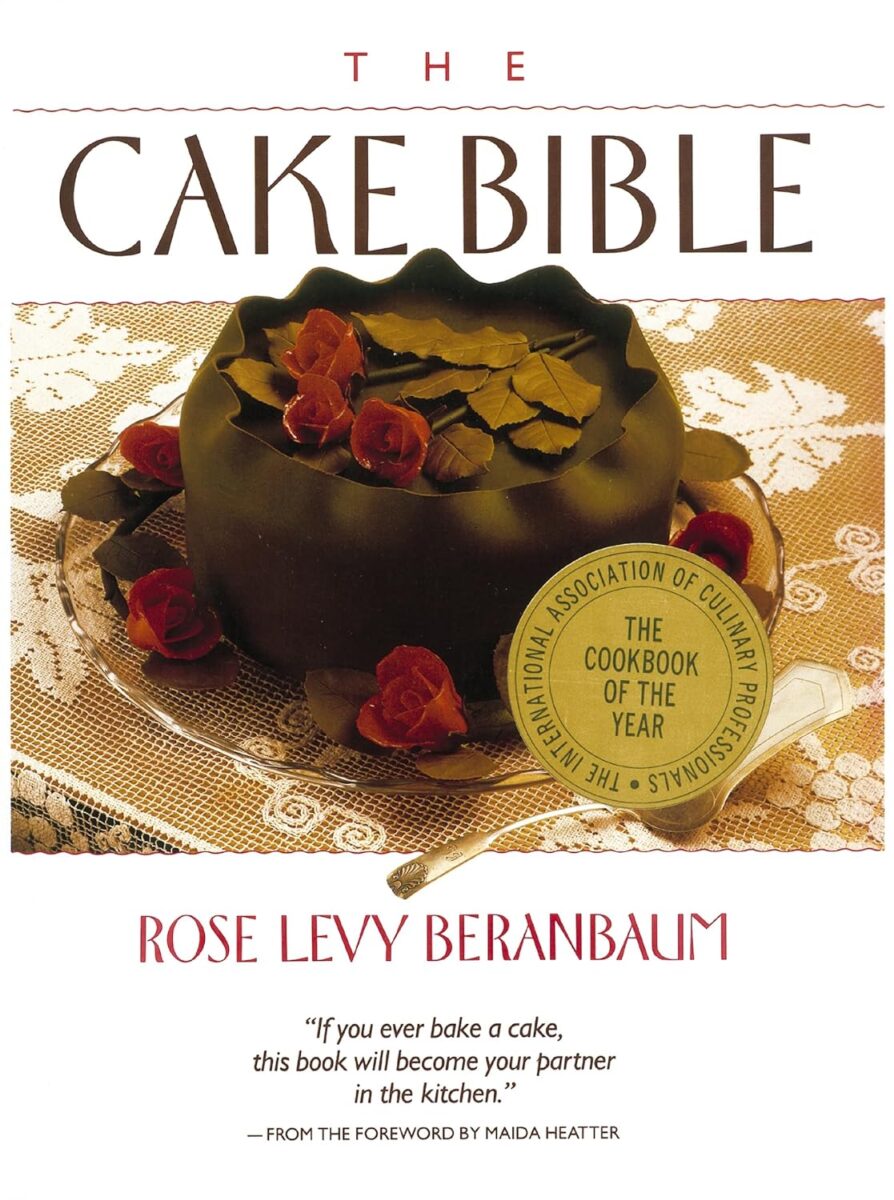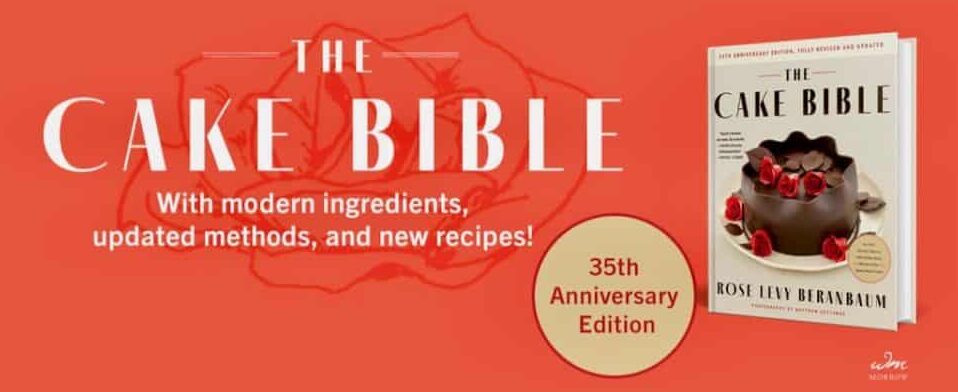My conversation with the Diva of Baking
I wanted this to be just a casual conversation with my old friend Rose Levy Beranbaum. However, I did write out a list of questions, some from our writers who are rabid fans of Rose’s work. I’m very interested in her style of creating beautiful, excellent recipes that are easy to follow and very accurate. I know that’s very important to Rose Levy Beranbaum.
My first question is: How did you get started writing?
Well, to begin with, I think initially people looked at my recipes and thought, “There’s too much information. We don’t need that.” Then they used other people’s recipes, met problems, and wrote to me asking how to fix them because not all the details were there. So, it took 35 years—well, maybe not that long, but it took a long time for people to realize that if you don’t get all the information for baking, you’re in trouble.
Do you have formal culinary training?
By now, I have it all, but I didn’t start off that way.
I was at NYU, where I earned my Bachelor of Arts, Bachelor of Science, and Master of Arts. I renamed the program. It was called Home Economics at the time, and I thought that absolutely did not stand for what it is. It’s now Food Studies. I love naming things.
In the Bachelor of Science program we didn’t have much laboratory work, so I found that by conducting experiments on my own, I learned more than in class. I’m not saying it wasn’t valuable; it provided a framework for understanding what food science was and the effects it could have. I got to do food demonstrations—it was a good program, but not nearly what it is now. The same goes for the Master of Arts. The most interesting thing there was that we were asked to write a thesis. My professor asked me to come back the next year to read mine to the students because I was thorough to a fault. And that’s my personality, and how I developed my style of research and writing.
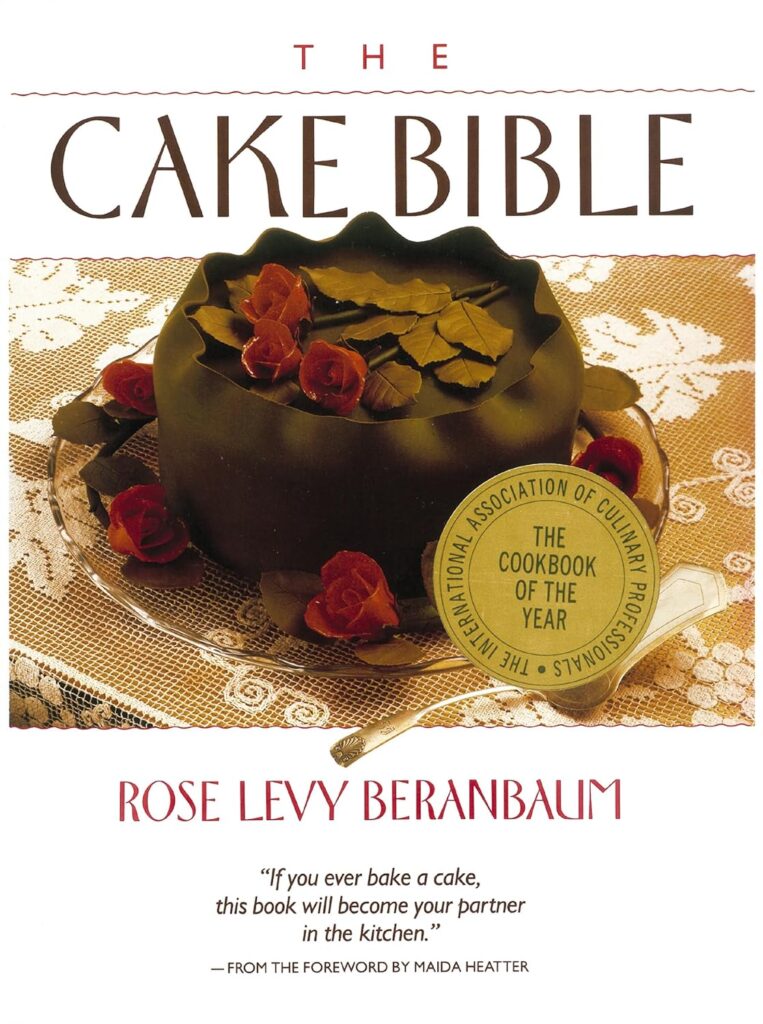
My thesis was: Does Sifting Affect the Quality of a Yellow Cake?
It sounds like nothing but it was the the first thing I learned about writing. Do research when you’re going to write about something. How many years ago was that? 49 years ago. I discovered sifting is not to uniformly incorporate ingredients, it’s to make the hydration, the moisture absorbing the quality, and the emulsification more easily done. That eventually caught on and it became the basis for the reverse creaming method, for which I’m best known. That actually was the basis of the Cake Bible, that came out 35 years ago. It sold 18,500 books in one day. It made history. In fact, they had to open up a special phone line. They were never expecting this book to sell because baking was not popular at the time.
So, whisk instead of sift?
Yes, but not always. Sometimes you have to do both. If you’re using baking soda, sift the baking soda and then whisk it together. But you can whisk it all together after you sift the baking soda. And it’s interesting because baking soda is always the same weight, as salt is always the same weight. But baking powder is never the same two days in a row, and that’s a great source of frustration. When I did the cake mix, I called the company of the baking powder that I liked and asked, “What do you think I should do?” They said that the weight is always correct. It’s the volume that’s going to alter for a variety of reasons.

Tovolo Kitchen Tools Giveaway
Top quality essentials. Win 3 stainless steel mixing bowls and 5 whisks from Tovolo!
Understanding how ingredients worked was the secret of my success in all the books because it enabled me to create.
Can your recipes be altered?
Many say, “Well, can I use this instead of that?” Change only one ingredient at a time. Basic high school science tells you that if you have two variables, you don’t know which was responsible for the outcome.
The science of this is fascinating. And what’s amazing is that from science comes such beautiful creations.
You asked about professional training. It wasn’t just the academic, which is valuable, but I kept trying everything. I kept trying different temperatures for the butter for the reverse creaming method, and I also studied. I went to study at Lenotre in Paris. But when I got my first job at Ladies Home Journal in the Test Kitchen I didn’t know how to pipe. So, I signed up for Wilton in Chicago. I knew nothing. So that’s how I learned from square one. I studied with the White House pastry chef. I went to every food conference. I wanted to eat it all up, understand, connect, and know as much as I could.
When you were studying in France, were classes in French, do you speak fluent French?
I just took the leap. I’m just getting the chills remembering how life was. Luck and chance. I started making my notes in English, and then very quickly I switched to French. What I learned there confirmed what I’d already learned on my own. For example, making a genoise. I decided since it’s so hard to incorporate butter into a foam of eggs and sugar, I would sacrifice some of that foam mixture to mix in with the clarified butter and then mix it in the rest. I did learn some things that I didn’t know, but it was not that much, surprisingly. Just great being in the company of other chefs. One woman came all the way from Japan. It was so cold in France that December, and she kept coming over and hugging me because she was trying to warm up. It was an experience I’ll always value, but it was not what I expected it to be.
My husband wants to know what kind of cooking you do at home. You’re a writer, recipe developer. Do you eat a lot of sweets? Do you make your own bread?
I could take all day to answer this wonderful question. My theory is that bakers can cook, but most cooks can’t bake because cooks are improvisational. They don’t want to follow recipes. I would say follow it the first time. The way I wrote it, you know? Cooking all these years, I don’t need recipes, but for certain things I want it to be the same as it was before.
I love technology and I’ve designed equipment for working in the kitchen, for both savory and for sweet. About two years ago, my husband Woody and I discovered induction. I love hanger steak. It has an intense flavor, but it’s often tough. But when you do it in sous-vide, not only is it quick, but you can do it ahead and grill it for 2-4 minutes, and it’s tender as a filet but with flavor. I’ve turned my love of science and cooking to also to food and we try to make the most of all the ingredients.
We tasted 28 pies for Thanksgiving at Gramercy Tavern in a day.
I started baking because I found everything was too sweet. My mother had the dental office on the corner of 95th St. and Central Park West. She didn’t believe in having sweets in the house. In fact, I was the first person ever to be called into Procter and Gamble to revise their cake mix, and the first thing I told the engineers was that sugar is the enemy of taste. Sugar shouldn’t be the first thing you taste. People used to use quite a bit more sugar than flour by weight by volume. Half the volume of sugar to flour.

“My regular cherry pie and peach pie with cream cheese crusts are both her recipes. I especially love her technique for reducing the peach liquid to concentrate it instead of adding a lot of thickeners. I think it’s genius. The science nerd in me loves her approach in her new cookie book. She even includes an explanation of how the size of eggs and the ratios of white to yolk can vary and includes weights in her recipes so you can adjust to get consistent results. I love this stuff.” –Judy Zatz
I love this person. She values all the things that you and I value the most.
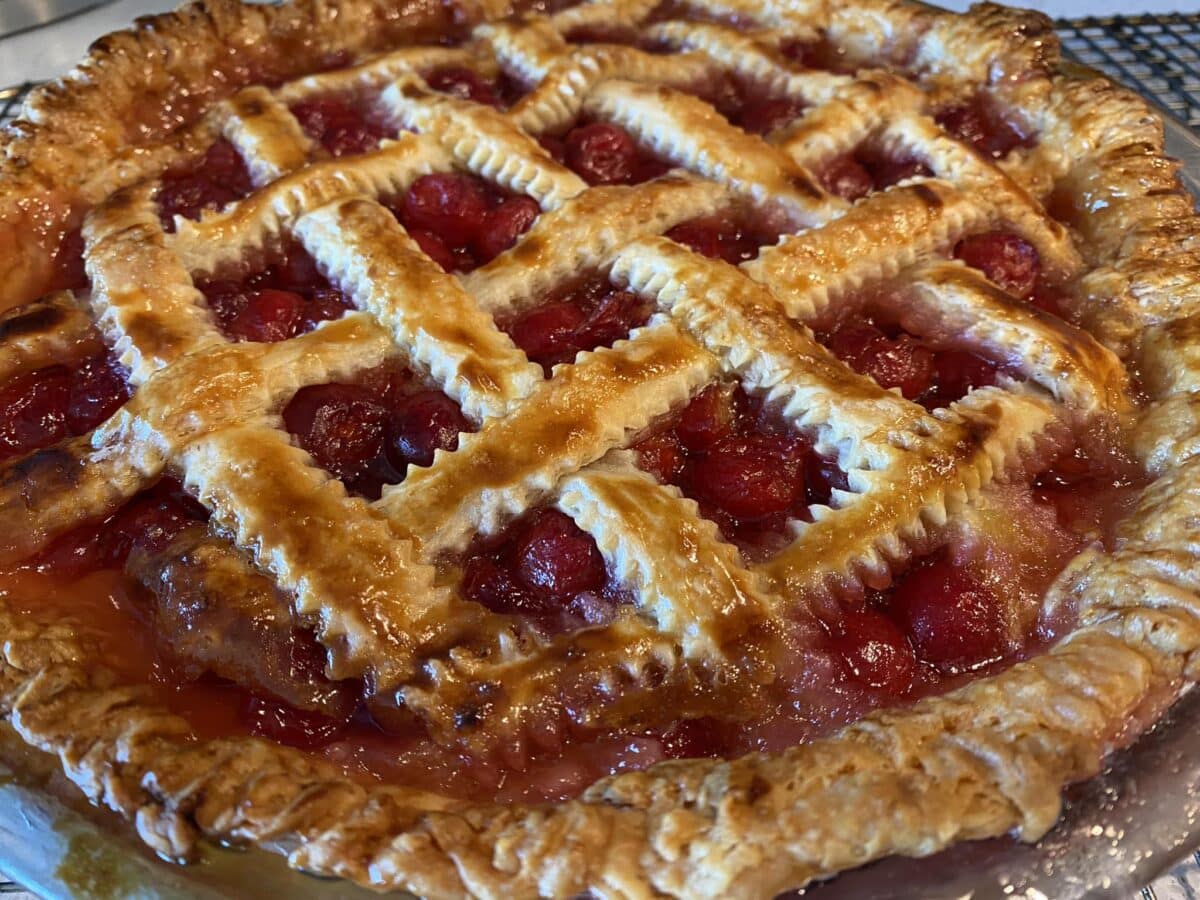
I remember something you told me over 30 years ago. You said your first husband Elliott was impressed with how carefully you cleaned out a bowl when you were scraping when you first met. Your recipes are so precise, you’re careful, and that’s why they work so well.
Well, I wrote about him in the intro to the Cake Bible that when we met, he said that he discovered the same thing about flour I did, for barium studies that he conducted. He’s a radiologist. He went out and got himself a Waring blender, and I thought this is the man I’m going to marry. He has the same approach. Oh. For years I felt insulted by him because he said I was an alchemist. Not a chemist, not a scientist. He meant it as a compliment. He said scientists have their theories disproven eventually, while an alchemist does the experiments.
When I was a consultant at Procter and Gamble, we would have little sessions after we tried out different things somebody might say about a chocolate tasting,” this one tastes muddy.” Or “This one tastes like the sea.” No two people used the same descriptor. I said, “I think we should define what we mean by muddy.” These were people with doctorates, people who got awards for emulsifiers and cake mixes, but I was the first person they ever brought in from the outside. They were capable of technology but didn’t know how to be creative. I wasn’t allowed to talk about it for seven years. But I’m so glad they weren’t counting on my good memory. Because it’s just definitely going in my memoirs. And part of what I wanted to share with you. They learned so much from me, and I learned so much from them. I talked to their head scientist, an old man in an ivory tower that nobody talked to. He was so excited when I asked how to get the most flavor out of chocolate. He said it’s easy. Every particle of cocoa has a membrane. Break that membrane to release the hidden flavors. The way you do it is by boiling water, and it’s better to use cocoa in a cake. So I told them that the ultimate chocolate cake was a cocoa cake. Make holes in it and brush it in, I do have that recipe in the updated Cake Bible. This was a wonderful partnership.
Another comment from a trained cook and reader. “I have her Pastry Bible, much used and dog-eared. Her Cookie Bible, and her Bread Bible. I love her cream cheese crust, particularly with the peach filling, which is a match made in heaven. I was wondering if she uses another crust recipe for more savory recipes like quiche, and if so, would she mind sharing the recipe?”
I’m surprised that so few people give acknowledgement to other people’s work. I think we all build on each other and it’s so interesting to know where things are coming from. I’m known for cake and I’m most proud of it. I like making pie crust, but the thing I like best to make is bread. I just love the whole process and the feeling of it being alive. I think I have at least 20 different favorite crusts, but I almost always turn to is a cream cheese butter recipe because of the flavor and wonderful flaky texture. For savory crusts I also love adding goose fat. I like rendered leaf lard for its pure flavor. But I don’t like to taste pork in my apple pie. Even though it does give the most flaky and tender crust, I think it belongs where you’re using the savory fillings. Crisco has no flavor. I don’t believe in using that, but I’ve tried. I’ve experimented with many different fats and when I worked for the Dairy Council, the sale of butter increased in two years by 14 1/2 percent. (It didn’t hurt that they discovered in the second year that margarine was bad for you.) Butter is better, but cream cheese is even better than that.
A reader wrote that when Nabisco discontinued their chocolate wafer cookies your recipe for wafers is “a lifesaver.”
How could a company drop something that’s so beloved? When you make your own wafers to go with rum balls, it’s so delicious. It’s so worth it. That’s a favorite recipe from the Christmas Cookie Book.

I think baking is the best possible lesson for children because it teaches everything. It teaches patience, it teaches artistry. It teaches precision.
The same enthusiast fan went on to say:
“There are so many wonderful cookie recipes in her Baking Bible. Is there one she can recommend for a Holiday Cookie Day party that would be fun to make with kids.”
Well, actually the one I wrote for The Cook’s Cook, Cranberry and White Chocolate Cookies. Rolling it in your hands is great fun for kids.
And make Gingerbread Cookies for them to decorate.

Kids can take part in almost any part of cookie baking. They don’t have to do the whole thing. And often their little fingers are better at doing anything that involves rolling dough. As a child, my mother let me do finger painting once. With cakes, all you can do with your hands is frost. Everything’s done in the mixer, or preparing the ingredients, but cookies are perfect for kids.
Your Cranberry and White Chocolate Cookies are so delicious. I love them right out of the oven, but I really like cookies that improve with age, do you have any more advice about what might improve cookies?
I think cookies that are moist improve best with age, the moisture distributes more evenly. Spices are great preservatives, and they develop and bloom with age.
Candy is sweet by nature, but a cookie should be a balance of the tart and the sweet. If you’re putting in an element like white chocolate that has a lot of sugar, you need a balance of 1/3 each: white sugar, milk solids, and fat, and you must temper it with something tart. Lemon zest is great. And all these things contribute to the shelf life.
People think they hate white chocolate because they don’t realize what white chocolate is, what’s in it, what it is composed of. If it’s three ounces, that’s one ounce more of sugar. They were adding it to cake. And of course it got hideously sweet. Just take the sugar out of the mixture and then you have the right balance of flavor, so it’s not an evil thing. It adds a wonderful consistency to things like brownies.
Do you have any other helpful baking messages you would like to share? We’ve enjoyed your Cookie Tips.
Cookies are ideal for many reasons. With many cookie doughs you can just take a little bit of the dough and bake one cookie and see how you like it. And then if you think, “Gee, this is just sweet, I better add some lemon zest to this or it’s it needs a little bit more sugar.” The dough is forgiving. If you did that with the pie crust, you’d get cardboard.

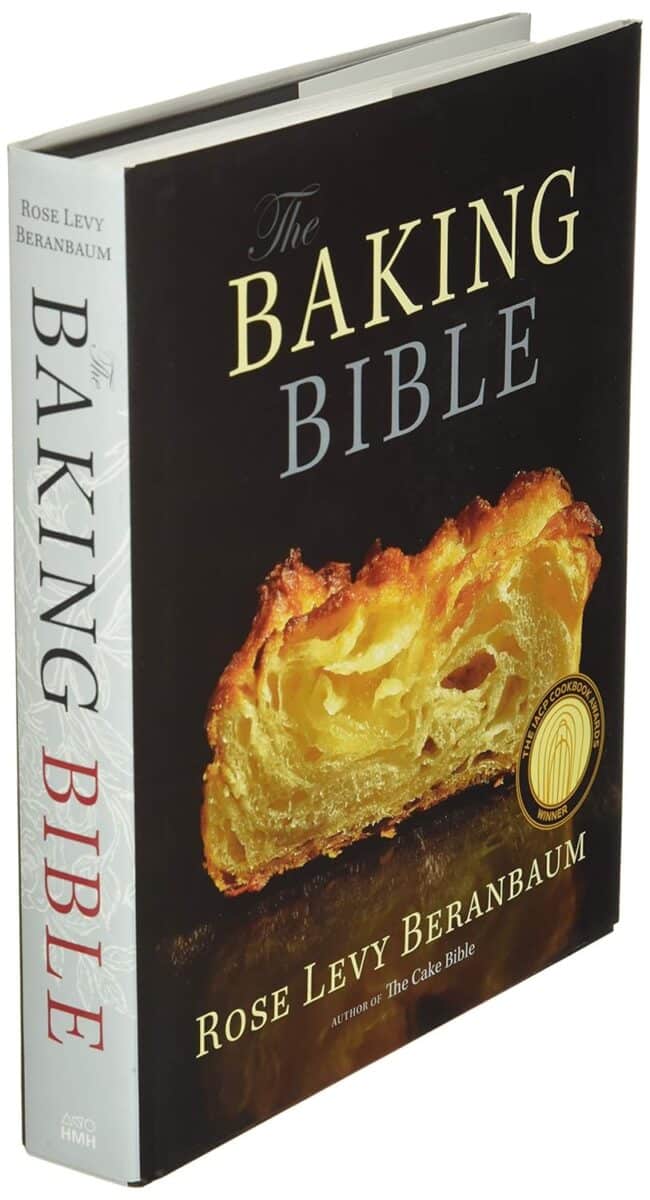
I want to ask you a question that is not for the public. I’m just curious to know your favorite baking powder? I’ve used various brands, and I am ashamed to say that I haven’t really ever given it a lot of thought.
I think the public might really love knowing this. It’s Rumford. It used to be sold just in health food stores, but all the supermarkets have it now. It is not aluminum based and calcium gives a much better flavor. I discovered how important it was when I started making pie crust. When you make pie crust with a little bit of baking powder, when it bakes, it lifts up the layers and then it breaks up a little bit so that it tenderizes, which is perfect. When we were doing the photo shoot and the stylist did not use Rumford, I could tell. It’s critical in pastry, but in cake it doesn’t make as big a difference, but it still is a better flavor, so I just use it for everything.
Can you talk a bit about the new revised edition of the Cake Bible? When is that going to be released?
It’s going to be released in October 2024. The manuscript is over 1000 pages, so it will be larger than the original and we have a lot more color photos. It’s been a lot of work, but joyful. My very first cake was the mayonnaise cake. And was given to me on a penny postcard from my late mother-in-law many, many years ago in Vermont. But 40 years later, when I made it again, I thought, I wouldn’t want to eat this. So anything we don’t still love. has been removed and replaced by new recipes, or variations, and we also tested some of the things that we already perfected to see if we could make it even better. And one of the biggest changes is the size of the cake pan. In the first editions, pans were 1½” inches high. If you wanted a 2″ high pan for a wedding cake, you had to go to a special place to find it. Now you have to search for the 1 ½” ones and you can’t just increase the recipe because the amount of leavening is impacted. It was a huge amount of work revising those recipes to make them all for the 9” by 2” inch pans.
That’s wonderful. I’m excited. I can’t wait to see it.
Thank you. I had resisted doing this for years because my main thought was, “Why change a classic?” Well, if all the ingredients and equipment and techniques have change, it’s time to make a new classic.
I was hoping we could use the original photos because they were so much work. I would make a cake and I would carefully carry it across Houston Street to the photographer. The one that had the piped lattice trellis with roses in it, I could feel it cracking by the vibration of the trucks going down the street. But there are now things that we didn’t repeat. Like lattice. Having to redo all the photos, we went to Kansas to have the great cookbook author Erin Jeanne McDowell , who’s styled three of our last books, do a whole bunch of cakes (about 70 cakes in eight days!) and she did it out of love.
It’s been so fascinating talking with you. Looking forward to the 35th Anniversary Cake Bible release in October! ![]()
